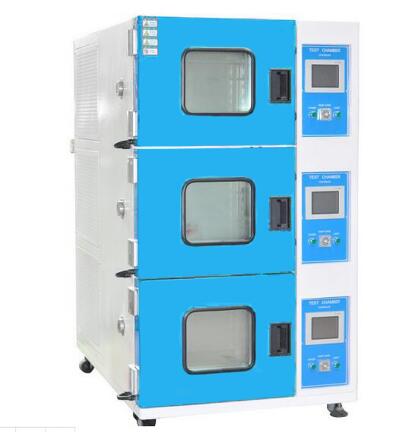Tel.: 008615989623158
E-mail: sales@grandetop.com
Tel.: 008615989623158
E-mail: sales@grandetop.com
Environmental test chambers can be used to test products for the following industry sectors: automotive, building materials, chemicals, electronics, timber, cosmetics, plastics, aerospace, metal, pharmaceuticals, tobacco, textile, packaging industry, biotechnology, bio-tissue engineering, ceramics, human and veterinary medicine, food and beverage, microbiology, surface technology, and plant and insect growth.
1. In the case of pharmaceutics, food, and cosmetics, climatic simulation test chamber monitoring are necessary to comply with rules established by international regulatory agencies. Environmental test chambers can measure and control humidity, temperature (mean kinetic temperature, for instance), differential pressure, particle counts, lighting, and gas levels, among others. Advanced aging studies within test chambers help to determine safe shelf-life levels and use-by dates.
2. In biology and microbiology, environmental test chambers can be used to monitor the effects of light, humidity and other factors on the growth of plants, algae, viruses, insects and small animals (such as the Drosophila, otherwise known as fruit flies). They enable the culture of cells, organs and tissues, as well as plant growth and insect rearing.
3. The aerospace industry relies on environmental test chambers to produce vacuum, thermal vacuum and thermal experiments that replicate outer-space conditions so that space system hardware can withstand extreme conditions of pressure and climate. Even portable life support systems for astronauts are tested using environmental test chambers. High pressure oxygen systems, cryogenics equipment and other instrumentation are utilized to test effects of reduced pressure and altitude conditions.
4. In the automotive industry, environmental test chambers are used to simulate conditions such as hot roads and extreme exposure to sunlight. All car manufacturers perform these tests, most of which use drive-in chambers located within the companies’ testing facilities. They reproduce real-world conditions, including normal humidity levels, wind speed, road and air temperatures, as well as extreme conditions, to check the cars’ performance. A dynamometer operates the cars remotely by spinning the wheels and revving the engine as needed. Drive-in vehicle chambers are air-tight and resist contraction and expansion.
5. Research studies have involved tobacco testing in environmental test chambers. These tests measure the effects of the air pollutants released by tobacco products. Medical studies are frequently performed to determine possible effects of toxic by-products.
6. Aside from complex research protocol used by universities, quarantine bureaus, large manufacturers and research institutions, environmental testing ultimately addresses the quality control inspection of every-day products like electrical appliances, batteries, plastics, paper products, and food.
Most of the products currently available to consumers are taken at face value, with little consideration for the arduous testing that they underwent in order to become commercially available to the end user. This is a testimony to the role that environmental test chambers play in developing and appraising the features and performance of marketable products. They have played a large role in advancing technology to current levels, while ensuring the safety and reliability of the products we use every day.
